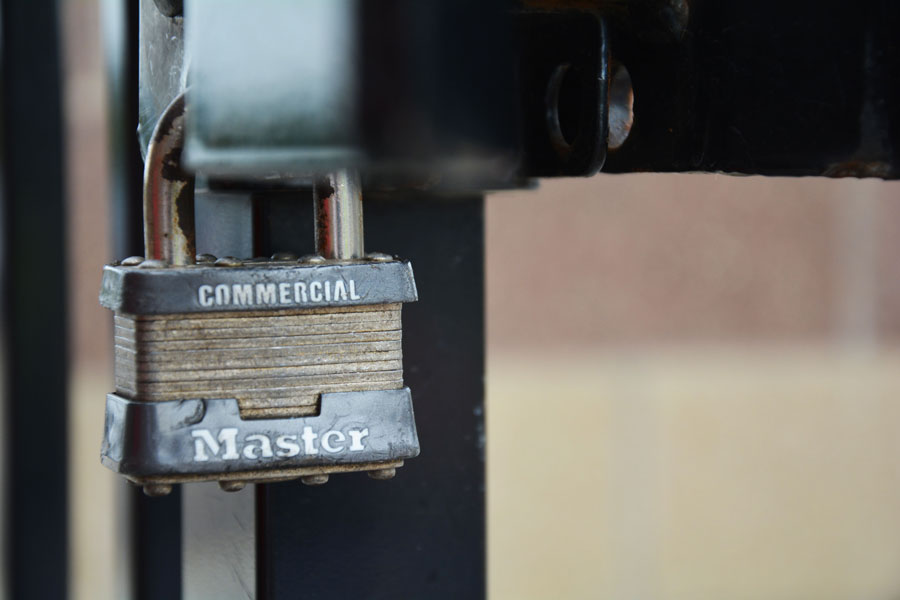Locking down: BSM’s pursuit of safety
Since BSM’s very first lockdown last year, the administration has been weighing the pros and cons of other safety options.
September 22, 2014
Sandy Hook Elementary. The name itself is enough to send shivers down the spines of classroom teachers. In 2012, twenty-six people, including twenty very young children, were killed at Sandy Hook Elementary School in Newtown, Connecticut. Neither the quick response of police nor a “secure” building would halt the devastation caused by a man carrying an assault weapon and several other guns.
While heart-breaking, incidents like Sandy Hook are infrequent. According to the Centers for Disease Control (CDC), less than two percent of murders of school-aged children happen at school, at a school-related event, or on the way to/from school. As of 2012, this statistic had been fairly constant for more than 10 years. In particular, young people in Minnesota are unlikely to suffer violent deaths. Minnesota sits in the bottom quartile of states where persons aged 10-24 are homicide victims.
Last school year, Benilde-St. Margaret’s began to secure its school building during the school day. This means that after the first bell, visitors to the school must “buzz” the school receptionist to gain entry to the school. Prior to admitting the visitor, the receptionist inquires about the person’s reasons for being on campus. Andersen, Senior High Assistant Principal and Security Director, commented on these new procedures. “I’m just so relieved that we went to not just making the visitors checking in, but locking the doors during the day. That was a big step to go there last year. A lot of schools still don’t have that,” Anderson said.
One of the key employees charged with helping to keep the BSM campus safe is Joe Creer, campus security guard. Creer began this role in May 2014. When asked about the relative safety of the BSM campus and building, Creer believed that BSM was 100 percent safe.
According to Andersen, in her 31 years at BSM, there has only ever been one security incident. The school also conducts nine lockdown, tornado, and fire safety drills each school year to be prepared for any safety threat.
The one incident occurred on May 23, 2014. According to an email sent later that day to parents by Dr. Susan Skinner, BSM’s senior high principal, “[a]n adult woman, unknown and unrelated to BSM came on our campus and exhibited disruptive behavior in the front parking lot area and front entry. In following our safety procedures, the police were called immediately and the school was put on Code Yellow lock-down.” The police took the woman into custody, and Dr. Skinner indicated that students were never in danger.
However, there is always room for improvement, which is why Andersen and Nicole Rasmussen, Assistant Principal and Freshmen Dean, attended a security training seminar, acting on the advice of a BSM parent who happens to be a police officer. The training they attended was called ALICE, an acronym for Alert, Lockdown, Inform, Counter, and Evacuate. “The concept is that a lockdown is no longer the only option you should have. All of the data that they have since Columbine in 1999 says that if your only option is a lockdown, you are in danger.
ALICE is not in place at the moment because the administration would need to train in all the teachers before employing it. “I don’t see us going to this ALICE without a little bit of context, which also means training our teachers. We’re going to spend the year looking at whether we’ve got some options in addition to lockdown,” Andersen said.
The BSM administration is continually looking for new ways to keep the school safe, but until more research is done on ALICE training, our lockdowns will stay the same. The best advice comes from Creer: “Pay attention. Listen to the authorities that are helping you and guiding you so that if there’s ever a real issue, you know what to do. Always pay attention.”






































![Teacher Lore: Mr. Hillman [Podcast]](https://bsmknighterrant.org/wp-content/uploads/2025/03/teacherlorelogo-1200x685.png)












